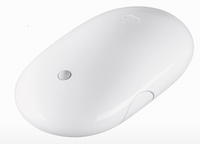Is Apple's Mighty Mouse too smart for its own good?


Before Monday evening's BMUGWest Mac User Group meeting in San Francisco, longtime member David Schwartz and I ran down some of the Leopard 10.5.2 changes and our discussion strayed to input.
I mentioned a scene that I overheard in a retail electronics store. A Mac critic said loudly that a big reason he hated the Mac was its lack of support for multibutton mice — of course, he was a solid Windows user. The original Mac had a single button and looking over at the iMac nearby, things didn't look any different.
Now, I couldn't let this pass. I walked over to his posse and pointed out that Apple's Mighty Mouse on display, the standard mouse that ships with all desktop Macs, has 4 programmable mouse buttons. This is only one button less than the usual complement found on a Microsoft mouse and this number must count as "multiple" by even a hardened PC user.
But it was tough to convince him since the industrial design of the Mighty Mouse hides almost all the buttons from view. Except for the separations surrounding the side buttons, there's not much evidence of buttons on the Mighty Mouse.
Worse, over the past week or so, I talked to several longtime owners of Mighty Mice (all intelligent people) who didn't know that there were 4 buttons. Some knew that there were two, but none could point to all four.
As Apple points out, the mouse functions more like a trackpad, using capacitive sensors to differentiate the pair of buttons on the top.
Thanks to a smooth top shell with touch-sensitive technology beneath, Mighty Mouse allows you to right click without a right button. Capacitive sensors under Mighty Mouse’s seamless top shell detect where your fingers are and predict your clicking intentions, so you don’t need two buttons — just two fingers.
So there really aren't buttons for the primary buttons, instead, there's technology that functions as buttons.
And the tiny trackball is also a button, but few got that.
Of course, I don't have a problem with the Mighty Mouse as I had with the infamous round puck mouse that shipped with the original iMac and other Macs of that era. Still, it appears that Apple's mouse design remains too clever for some of its users.
On the other hand, Leopard introduces a new behavior for mice and trackpads that is really convenient: background scrolling. If you move the cursor from the active window over to a non-active window, the trackpad or scroll wheel can be used to scroll the inactive content up and down. You don't have to click in it and then scroll. (We've always been able to move the non-active window with a Command+Drag on its top or bottom bars.)
However, the sharp-eyed Mr. Schwartz noted that not all applications support this new behavior (or even all windows within an application). It's up to developers to support this behavior.
Here's where longtime habits can slow one down: for many longtime Mac users, a background scroll isn't possible, so they likely won't even try it. If they fidget with the scroll ball on the top of the Mighty Mouse as they move across the screen then they may discover it on their own. Good luck.
Yet, even Apple Human Interface Guidelines appear to be a bit behind the times on these input niceties. It makes distinctions between the Main window, the one that users are focused on, and the Key window, which is the one that's supposed to accept user input. Inactive windows are supposed to be, well, inactive.
Main and key windows are both active windows. An active window is visually distinct from an inactive window in that its title bar (and its toolbar, if there is one) displays the standard window-frame color, while the title bar (and toolbar) of an inactive window displays a lighter shade of the window-frame color. Inactive windows are windows the user has open, but that are not in the foreground. Main and key windows are always in the foreground, but only the controls of the key window have color. An active window that is not key has active, but clear, controls.
Then again, maybe not. Whatever.
This is all for the good. Apple is improving the interface and usability and then figuring out the rules. Background scrolling is great, even if the explanations have yet to catch up to the live code.